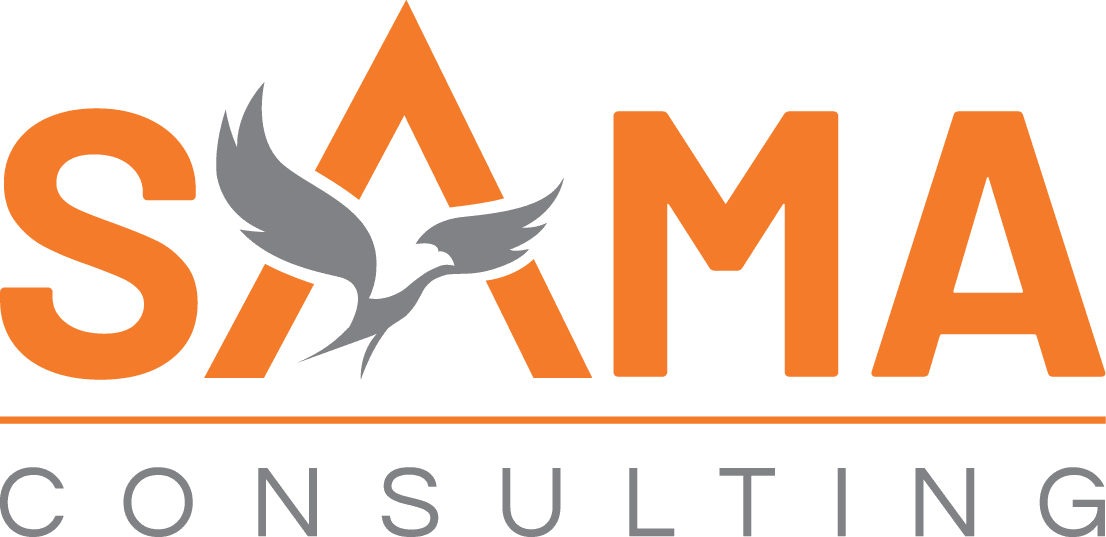
Baan V Customization: Tailoring Your System for Maximum Efficiency
In today’s rapidly evolving ERP landscape, where the global ERP market is projected to reach ~$52 billion in 2024 and expected to grow to 70 billion in 2025, organizations leveraging legacy systems like Baan V face unique challenges and opportunities. For experienced Baan users who have mastered the fundamentals, the next frontier lies in sophisticated customization strategies that transform standard functionality into competitive advantages.
The modern enterprise demands more than out-of-the-box solutions. AI technology will be inserted into the processes and products of at least 90% of new enterprise apps by 2025, making customization not just beneficial but essential for maintaining relevance. This comprehensive guide explores advanced Baan V customization techniques, addressing the technical complexities that experienced practitioners encounter when tailoring their systems for maximum operational efficiency.
Understanding Baan V’s Customization Architecture
Baan V’s architecture provides a robust foundation for customization through its integrated development environment. The system’s strength lies in its modular design, where business logic, data models, and user interfaces can be modified independently without compromising core functionality.
The customization framework operates on multiple layers. At the database level, you can extend table structures and create custom entities that seamlessly integrate with existing modules. The business logic layer allows for sophisticated rule modifications through 4GL programming, while the presentation layer offers extensive form and report customization capabilities.
The 4GL customization and development environment of BAAN IV Tools consists of two major components: the application data dictionary and the runtime data dictionary, providing developers with comprehensive control over system behavior. This architecture enables organizations to implement complex business rules while maintaining upgrade compatibility—a critical consideration given the substantial investment in ERP systems.
Understanding session management is crucial for effective customization. Each Baan session represents a specific business function, and customizing these sessions requires deep knowledge of their interdependencies. Session scripts control form behavior, data validation, and business process workflows, making them the primary vehicle for implementing sophisticated customizations.
Advanced 4GL Programming Techniques
For technical professionals working with Baan V, mastering advanced 4GL programming techniques is essential for creating efficient, maintainable customizations. The language’s event-driven architecture provides powerful capabilities for implementing complex business logic while maintaining system performance.
BAAN IV supports dynamic link libraries (DLLs) which means that functions for common use can be programmed in a library and linked to the object at runtime, reducing the size of objects to a minimum. This capability allows developers to create reusable code modules that enhance maintainability and reduce system overhead.
Advanced error handling techniques become critical when implementing complex customizations. Implementing comprehensive exception handling ensures system stability while providing meaningful feedback to users. The use of transaction control statements allows for sophisticated data integrity management, particularly important when customizations involve multiple table updates or complex business rule validation.
Performance optimization in 4GL requires careful attention to database access patterns. Implementing efficient query strategies, utilizing proper indexing, and minimizing database round trips significantly impact system performance. Advanced practitioners leverage techniques like bulk data processing and optimized cursor management to ensure customizations don’t degrade overall system performance.
Memory management becomes particularly important in complex customizations. Understanding variable scope, proper resource cleanup, and efficient data structure usage prevents memory leaks and ensures stable long-term operation. These considerations become critical when developing customizations that process large data volumes or operate in high-transaction environments.
Ready to optimize your Baan V system with advanced customizations?
Sama Consulting specializes in strategic Baan V customization, 4GL programming, and system optimization to maximize your ERP investment and operational efficiency.

Strategic Customization Planning and ROI Analysis
Effective Baan V customization requires strategic planning that balances functionality enhancement with long-term maintainability. The ERP market is predicted to increase from $23.63 billion in 2024 to $30.03 billion in 2025 at a compound annual growth rate (CAGR) of 27.1%, highlighting the importance of making informed customization investments.
Cost-benefit analysis should consider both immediate implementation costs and long-term maintenance implications. Customizations that provide significant operational efficiency gains justify higher initial investments, particularly when they address critical business processes or regulatory requirements. However, organizations must balance customization benefits against potential upgrade complications and ongoing maintenance costs.
Documentation standards become crucial for maintaining customization value over time. Comprehensive documentation should include technical specifications, business logic explanations, and maintenance procedures. This documentation proves invaluable during system upgrades, staff transitions, or when extending existing customizations.
Change management procedures ensure customizations remain aligned with business objectives. Establishing formal approval processes, testing protocols, and rollback procedures minimizes risks associated with customization deployment. These procedures become particularly important when customizations affect critical business processes or integrate with external systems.
Professional services partnerships can significantly enhance customization success rates. Working with specialized Baan consultants provides access to deep technical expertise and proven methodologies, reducing implementation risks while accelerating deployment timelines.
Integration Challenges and Modern Solutions
Legacy system integration presents unique challenges that require sophisticated technical approaches. In 2025, more buyers in the midmarket and below will be looking to alternative, cloud-first or open source ERP products, making integration capabilities increasingly important for organizations maintaining Baan V systems.
API development for Baan V systems requires careful architectural planning. Creating robust interfaces that support modern integration patterns while maintaining system security and performance demands advanced technical skills. RESTful API implementation allows Baan V systems to communicate effectively with cloud-based applications and mobile platforms.
Data synchronization strategies become critical when Baan V systems must exchange information with modern applications. Implementing real-time synchronization mechanisms requires sophisticated error handling, conflict resolution, and performance optimization. These capabilities enable organizations to leverage modern analytics platforms and business intelligence solutions while maintaining their Baan V investment.
Security considerations in integration design cannot be overlooked. Implementing proper authentication, authorization, and data encryption ensures sensitive business information remains protected during system interactions. These security measures become particularly important when integrating with cloud-based applications or external partner systems.
Middleware solutions can simplify complex integration scenarios. Leveraging enterprise service bus architectures or modern integration platforms provides flexibility while reducing point-to-point integration complexity. These approaches enable organizations to create scalable integration architectures that can adapt to changing business requirements.
Performance Optimization and Scalability Considerations
System performance optimization requires comprehensive understanding of Baan V’s architecture and operational characteristics. The global Enterprise Resource Planning (ERP) Software Market size is expected to expand at a CAGR of 10.7% during the forecast period, emphasizing the importance of maintaining competitive system performance as business demands grow.
Database optimization techniques play a crucial role in customization performance. Implementing proper indexing strategies, optimizing query structures, and managing table statistics ensures customizations operate efficiently even as data volumes grow. Regular performance monitoring and tuning become essential practices for maintaining optimal system response times.
Memory utilization optimization requires careful attention to data structure design and processing algorithms. Implementing efficient data handling techniques, minimizing memory allocations, and proper resource cleanup prevents performance degradation over time. These considerations become particularly important for customizations that process large datasets or operate continuously.
Concurrent user management affects customization design decisions. Understanding lock management, transaction isolation levels, and resource contention helps developers create customizations that perform well under heavy user loads. Proper session management and resource sharing strategies ensure customizations don’t negatively impact overall system performance.
Scalability planning should consider future business growth and changing operational requirements. Designing customizations with scalability in mind ensures they continue providing value as business demands evolve. This planning includes consideration of hardware requirements, network bandwidth utilization, and storage capacity implications.
Ready to optimize your Baan V system with advanced customizations?
Sama Consulting specializes in strategic Baan V customization, 4GL programming, and system optimization to maximize your ERP investment and operational efficiency.

Quality Assurance and Testing Methodologies
Comprehensive testing strategies ensure customization reliability and minimize business disruption risks. Effective testing encompasses unit testing, integration testing, performance testing, and user acceptance testing, each addressing different aspects of customization quality.
Unit testing for 4GL customizations requires specialized approaches due to the language’s characteristics. Creating isolated test environments, developing comprehensive test cases, and implementing automated testing procedures where possible ensures customization components function correctly under various conditions. This testing becomes particularly important for complex business logic implementations.
Integration testing validates customization interactions with existing system components. Testing data flows, business process interactions, and system interfaces ensures customizations don’t introduce unexpected behaviors or compromise existing functionality. Comprehensive integration testing becomes critical when customizations modify core business processes.
Performance testing under realistic load conditions reveals potential bottlenecks and scalability limitations. Simulating production-level data volumes and user concurrency identifies performance issues before deployment. This testing helps optimize customization performance and plan for capacity requirements.
User acceptance testing validates that customizations meet business requirements and provide expected functionality. Involving end users in testing processes ensures customizations deliver promised benefits and don’t introduce usability issues. This testing phase often reveals requirements gaps that weren’t apparent during initial specification development.
Future-Proofing Your Baan V Investment
Long-term strategic planning ensures Baan V customizations continue delivering value despite changing technology landscapes. Organizations must balance immediate customization benefits with future flexibility and migration considerations.
Technology evolution impacts customization strategies. Understanding emerging trends in enterprise software, integration technologies, and user experience design helps inform customization decisions that maintain relevance over time. This awareness enables organizations to make customization investments that support future technology adoption.
Migration planning becomes increasingly important as organizations evaluate their long-term ERP strategies. Designing customizations with migration considerations in mind reduces future transition costs and complexity. This planning includes data structure design, business logic documentation, and interface standardization that facilitate future system transitions.
Vendor relationship management affects long-term customization success. Maintaining relationships with specialized service providers, staying informed about product developments, and participating in user communities provides valuable insights for strategic planning. These relationships become particularly valuable when planning major customization initiatives or system upgrades.
Skills development ensures organizations maintain capability to support and enhance their customizations over time. Investing in training programs, developing internal expertise, and maintaining technical documentation ensures customization investments remain manageable throughout their lifecycle.
Conclusion
Baan V customization represents a significant opportunity for organizations to maximize their ERP investment while addressing unique business requirements. Success requires combining deep technical expertise with strategic planning and comprehensive quality assurance practices.
The key to effective customization lies in understanding the balance between functionality enhancement and long-term maintainability. Organizations that approach customization strategically, with proper planning and professional guidance, can achieve significant operational efficiency gains while protecting their technology investments.
For organizations embarking on complex Baan V customization projects, partnering with experienced professionals provides access to proven methodologies and specialized expertise. This collaboration ensures customization projects deliver expected benefits while minimizing implementation risks and long-term maintenance complexities.
The future of Baan V customization lies in creating solutions that bridge legacy system capabilities with modern business requirements. Organizations that master these techniques position themselves to maintain competitive advantages while preserving their substantial ERP investments.
Ready to optimize your Baan V system with advanced customizations?
Sama Consulting specializes in strategic Baan V customization, 4GL programming, and system optimization to maximize your ERP investment and operational efficiency.

